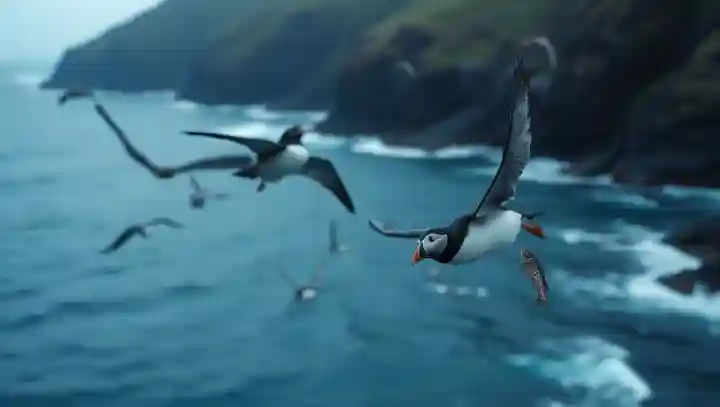
Along the rugged coastlines of Iceland, Atlantic puffins have captivated ornithologists and wildlife enthusiasts with their extraordinary abilities as aerial fishers. These small seabirds execute precision dives from significant heights, plunging into the Atlantic waters to secure their prey. Unlike many marine birds that fish at the water’s surface, puffins employ a dynamic combination of flight and plunge-diving to catch fish such as sand eels and capelin. Dr. Emily Hargrove, a marine biologist specializing in avian behavior at Reykjavik University, emphasizes that puffins’ fishing method is both energy-efficient and highly effective within their oceanic habitat. "Their ability to navigate air currents and dive sharply allows them to access a variety of prey stocks inaccessible to other birds," she explains. This technique also plays a critical role in sustaining puffin populations amidst fluctuating fish availability caused by climate shifts. Recent field research utilizing drone surveillance and underwater cameras has documented puffins executing complex aerial maneuvers before entering the sea. This insight not only enriches our understanding of puffin ecology but also highlights the evolutionary adaptations that enable these seabirds to thrive in challenging environments. Conservationists urge awareness of this unique behavior to further protect puffin habitats along vulnerable coastlines. As interest grows globally in avian marine hunters, puffins stand out as remarkable exemplars of how flight can be seamlessly integrated with aquatic foraging. Their captivating fishing performances from the skies offer both scientific intrigue and a compelling visual spectacle, underscoring the intricate balance between air and sea in nature’s design.